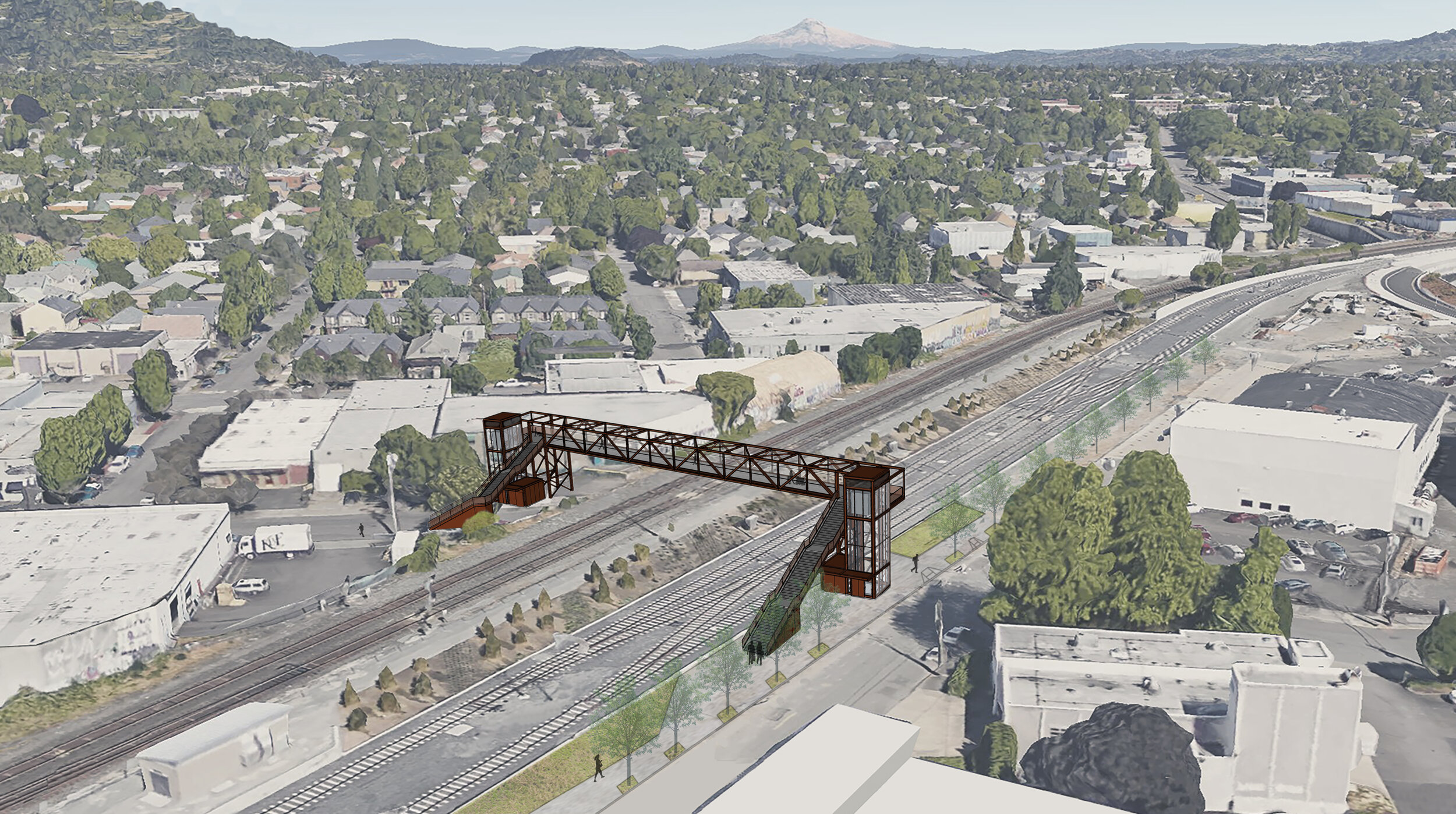The most important bike route improvements currently happening in Portland,
part 2
We recently published part one of this post—you can read that here. Today we’re highlighting one more of our favorite new infrastructure developments currently underway in Portland, and closing out this two-part discussion with an international example of carless infrastructure that combines ingenuity, sustainability, functionality and environmental considerations to really shift the thinking on the relationship between roads, ped/bike paths, and the natural world.
Gideon Overcrossing
WHAT IT IS
This bike and pedestrian crossing is being constructed over the MAX Orange line and Union Pacific Railroad tracks, connecting SE 14th Avenue and SE 13th Place at Gideon Street.
WHY WE’RE EXCITED ABOUT IT
This is notoriously one of the worst places in Portland to get stuck at a crossing, with freight trains sometimes resting at a full stop across the intersection for up to two hours. While this bridge can’t help those poor souls in cars, it will be equipped with stairs and elevators on both sides to ferry cyclists and pedestrians safely across. A former crossing had to be removed during the construction of the Orange Line, and this return has been a long time coming. Currently your best bet for getting across the tracks is at SE Milwaukie Ave., where it splits into 11th and 12th. But, again, stopped trains are an issue. Cyclists are often seen climbing over the couplings of active freight cars—what? People. Let’s please stop doing this. Delays are such a pain point to commuters and businesses alike that a development group in a nearby building built a uni-functional website specifically to track whether or not a train is blocking the intersection. At press time, isatrainblocking11th.com reported: “NO.”
WHY IT’S IMPORTANT
This crossing will unite the busy greenways of Gideon Street and Clinton Street, and give cyclists an alternative to climbing between railcars (again, let’s don’t) or waiting endlessly for the intersection to be clear. It will also effectively finish off the Clinton to the River project, a mostly-complete 2.8-mile bicycle route that’s been in the works for nearly a decade. Another example of Portland’s ongoing commitment to reshaping how the city handles vehicles, bicycles, and the relationship between the two.
Bonus! The Blauwe Loper Bridge
While Portland keeps finding new ways to route bike and pedestrian traffic across bodies of water, through wildlife preserves, and over busy roadways, the Netherlands recently began construction on a bridge that will span all three, and more. There’s so much to love about this project we’re not sure where to start.
The Blauwe Loper—or “Blue Carpet”—will be the longest bike/ped bridge in Europe and one of the longest in the world. At completion of phase one it will span 800 meters, with plans to ultimately extend it to more than a kilometer. (Technically, China’s Bicycle Skyway holds the title, knifing through the congested core of Xiamen and clocking an impressive 7.6 km—almost 5 miles—of continuous dedicated bike lanes. It’s arguably more of an elevated bicycle highway than a true bridge, but who are we to argue.)
This news should come as no surprise; in the Netherlands, bicycling is a universally-enjoyed pastime and primary form of transportation. It’s often reported that there are more bicycles than people in the Netherlands, and over 32,000 km (about 20,000 miles) of dedicated bike path crisscross the region’s mostly-flat terrain, making it the perfect setting for a bike-first culture.
Just wait, it gets better.
Tantamount to pedestrians and bicyclists, one of the top design considerations for the bridge was a much longer-tenured inhabitant of the region: bats. The Blauwe Loper will be painted a “bat-friendly” green and outfitted with solar-powered LEDs, as an aid for bat colonies to avoid the bridge and navigate from their habitat in a nearby park to the feeding grounds at Oldambtmeer lake and back home again.
Lastly, builders of the Blauwe Loper claim that the structure, built mostly of resilient Central African hardwood sourced in Gabon, will last at least 80 years. As project leader Reinder Lanting told a local daily newspaper, “This bridge is not going to rot. That is because it is technically well designed. The wood is not pressed together but has a sort of venting system.”
We love the ingenuity and radical thinking at work here. You can learn more about the project at Blauwestad.com.






